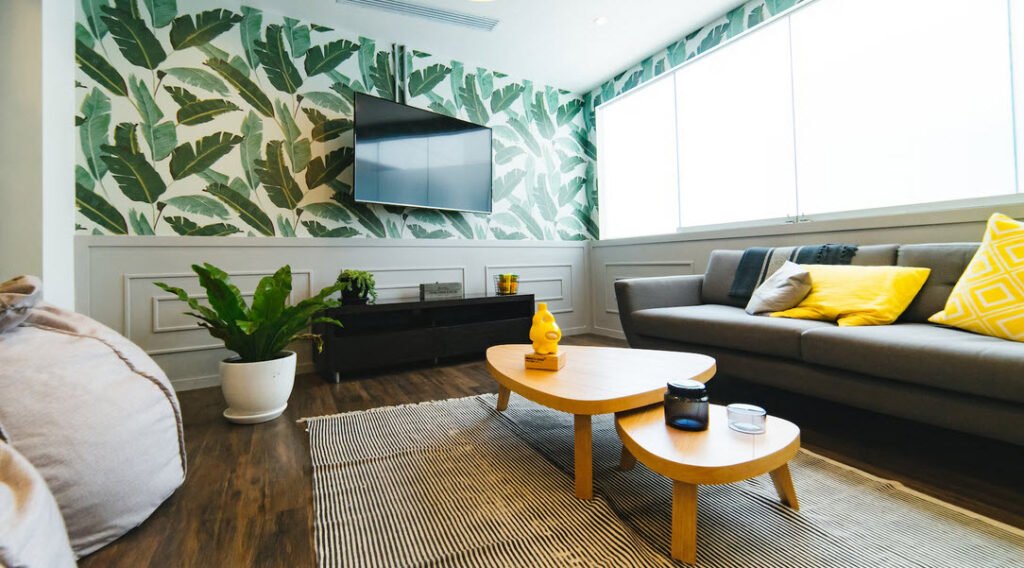Stencils are fun and easy to use decorative and utilitarian tools made of thin sheets of cardboard, plastic, or metal with patterns or letters cut out of them. You can use various art and craft mediums to print design using stencils. The art of creating designs using stencils is known as stenciling.
So why use stencils?
Stencils come in a variety of shapes, sizes, and styles to help you design on any project and surface of your choice. Here are some reasons to use stencils:
- Stencils are more economical as compared to store bought Decor elements.
- Stencils come in a variety of designs and sizes.
- Stencils can be used with a variety of mediums such as paints, inks, texture pastes, etc.
- They are reusable to print designs on any surface of your choice including paper, wood, wall, fabric, and plastic.
- They relieve stress and help you relax. Improves your confidence and gives a sense of satisfaction and accomplishment.
- They help you spend quality time with your kids and do some creative art.
Tools to use with stencils:
Stencils are very easy to use and don’t require any skill training. Even a novice can easily use them to create beautiful designs on various craft projects. Here is a list of some essential and non-essential tools and equipment to make your stenciling experience more fun and easy.
Essential tools:
1) Inks and paints: To create designs using stencils you would need paint or inks. A variety of paints including acrylic, chalk, fabric, watercolor can be used with stencils. You can also use all types of craft inks (pigment/ dye/ chalk/ solvent/ hybrid) with stencils. Spray inks, pencil colors, and markers can also be used with stencils.
2) Applicators: You would need an applicator to apply inks and paint through stencils. You can use a stencil stippling brush, soft bristle blending brushes, sponge rollers, natural sea sponge, blending foam, sponge daubers, spouncer, palette knife to print designs using stencils.
3) Low tack masking tape: You would need a low tack masking tape to adhere your stencil to your work surface. You can also use low tacky spray to create repositionable stencils.
Non-essential tools:
1) Ruler and measuring tapes: A ruler or measuring tape can help you place your stencils in correct positions. Rulers or measuring tape are especially important when you want to use the same stencil repeatedly (like when designing on a wall) to create a print, as they will help you measure the accurate distance between each stencil print.
2) Set-square: Set-square gives accurate corners and right angles and can be very helpful in placing stencils especially when working on large surfaces.
3) Graphite pencil: A light graphite pencil to make markings to place your stencil on your craft surfaces.
4) Fixatives: Fixatives such as varnish, gel medium, or Mod-podge can be used as fixatives to seal your stenciled projects depending on the surface that you are working with.
5) Paper towel/ Rags: To dab of any excess paint or ink of your applicators. They are also important to keep your work surface clean.
6) Paint Roller and Paint tray: You would need a paint tray for your paints.
7) Clip on Stencil Level: This tool helps you to align adjacent stencils in a straight line, when stenciling on wall
Preparing surfaces for stenciling:
All work surfaces need to be free of dust before you stencil on them. The surfaces also need to be flat and free of any texture or the stencil design (paint) may peel off over some time.
You need to use a different method to prepare the surface based on the nature of the surface. Some surfaces can be prepared by simply cleaning them with soap water whereas other surfaces (like wood & terra cotta) would need to be sealed before stenciling on them.
1) Wood: Wood should be sanded down with medium and then fine-grade abrasive paper. When the surface is smooth, wipe it with a damp cloth to remove saw-dust and leave it to dry.
If you want to darken the natural color of wood, paint the surface with diluted wood stain in a long stroke along the grain of the wood. If you wish to retain the original color of the wood, apply a coat of water-based wood sealant before stenciling (water based sealant is preferred as they don’t have yellowish hue).
2) Wall: When working on a freshly painted wall, make sure the paint is dry before stenciling. If you are working on a wall that has been painted long ago, clean the wall surface using a mild soap water solution to get rid of any dust. If there are any cracks or chips in paints, make sure to fix them before stenciling.
3) Tin / Metal: Before stenciling on tin/ metal, you need to wash it with warm soapy water and let it dry. If the surface is very dirty or is rusting in some places, combine a bit of vinegar and baking soda and scrub it into the metal before washing with warm soapy water.
4) Papier Mache: Wipe it with damp cloth or paper towel to remove dust.
5) Paper / Cardstock: Make sure your paper is free of dust. If using embossing inks, use an anti-static tool to get rid of finger marks from the paper.
6) Glass / Ceramics: Wash with warm soapy water and allow it to dry. You can also clean the glass surface with rubbing alcohol. Use a lint-free towel when working on glass for the best result.
7) Canvas: Prime the canvas with 2 coats gesso before stenciling. Make sure the 1st coat of gesso is dry before applying the second coat. If you are using a pre-primed canvas, wipe it with a damp cloth to get rid of any dust.
8) Terra cotta: If you are working on terra cotta pots, wipe the surface with a damp cloth. Then seal the surface with a clear acrylic sealer before stenciling.
9) Fabric: Fabrics tend to shrink after 1st wash, hence thoroughly wash the fabric before you stencil on it. Washing also helps you to remove the sizing and protective chemicals used by manufacturers. You may need to iron the fabric before you start stenciling to remove wrinkles from the fabric.



